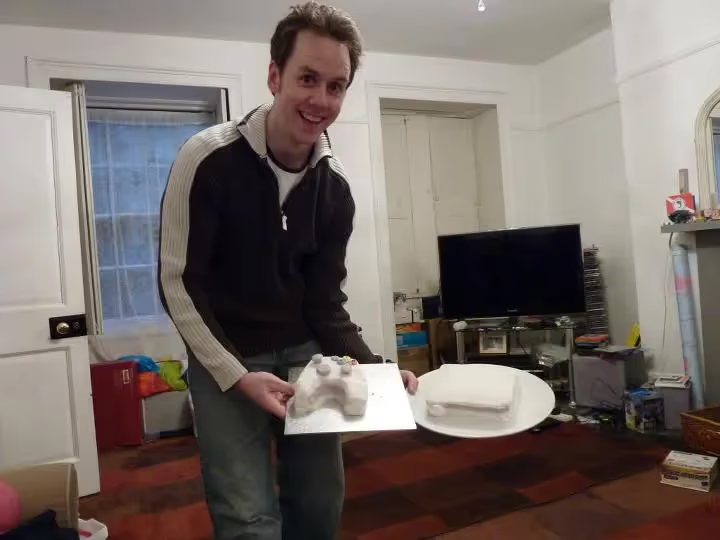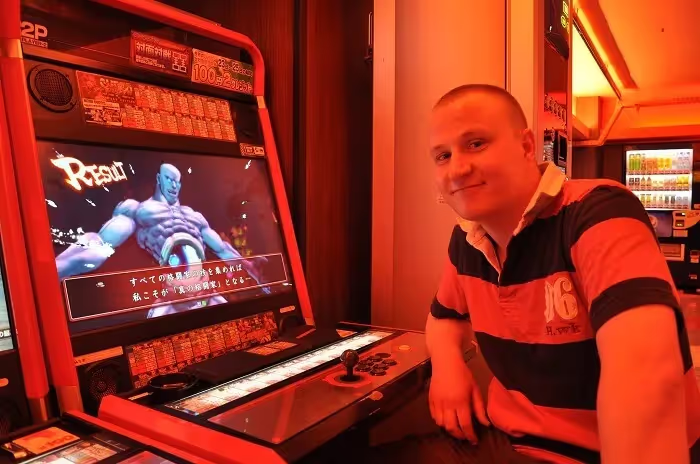Japanese samurai have been a rich source of inspiration for game developers since the early days of consoles and it's not hard to see why. Let's be honest: fearless, angry dudes with cool outfits and badass swords facing off in fights to the death make the perfect recipe for video games.
Trek to Yomi follows this fine gaming tradition but takes things a step further by creating a direct homage to the old black and white samurai movies that have inspired so many games in the past.
You play as Hiroki, a samurai who, after witnessing his village being raided by bandits and his master being murdered in front of him, has sworn to protect the innocent. As you might expect, things don’t go to plan and Hiroki goes on a revenge mission via Yomi, the Japanese land of the dead.
The whole thing is stylised to the hilt to make you feel like you’re part of an old black and white samurai movie rather than a modern game–film grain, dirt and scratches and even old movie hiss have been authentically replicated. It’s not just an old movie filter stuck over the top of a generic game either, the level designers have gone to great lengths to make the whole aesthetic of the game feel like an old film.

Everything is here: conflicted protagonists, melodrama, honour, revenge, ghosts, adverse weather conditions–the game covers all the tropes we know and love about classic Japanese samurai movies.
Not only that, but the devs wanted to make sure everything in the game was as authentic as possible. They even worked with a professional Japanese historian who specialises in the Edo period to make sure everything was historically accurate.
Even the voice script has been given the historical once over to make sure the language used is authentic for the time period. Voice acting can often be touch and go in indie games, but the developers have hired established voice actors from the world of anime which really makes a difference, and once again adds that movie quality sheen to the game.
I could rabbit on about how great the game looks all day, but the essential question is how the game plays. For that, the answer is unfortunately not as good.

The gameplay is a pretty linear experience. You really need to just travel a predetermined path between combat set pieces with a tiny bit of exploration thrown in. There are collectables to find and NPCs to talk to but these are merely short diversions; there are no real alternative routes to objectives; it’s pretty much one path from the start to the end of each section.
Combat in the game is all about timing blocks and parries with your sword to attack while your opponents are off guard. Button bashing won’t cut it and it does take some time to get used to treating each sword fight like a mini fighting game round rather than a beat 'em up smash fest.
One-on-one combat feels great and does often feel like a sword fight in a movie; both sides waiting for the other one to slip up to launch their counterattack, but there are plenty of frustrating moments when Hiroki is facing off against multiple enemies. You are attacked from both sides but the combat mechanics just aren't fluid enough to handle defending against more than one enemy at once.
The fighting is the same throughout the entire game which can get repetitive, but once again the visual splendour comes to the rescue. You’ll fight in the shadows behind paper screen doors, on bridges as lightning strikes behind you, in burning villages and rain-soaked rice fields. The cinematics of the fighting is enough to keep the whole thing exciting.

Whilst the gameplay starts to get repetitive after a while, the game really isn’t that long anyway, and despite a few tricky boss battles it will only take most players three or so hours to finish the game. There are three difficulty modes that can make combat more challenging and extend the game length somewhat, but that will only be because you die more.
Some people are going to be turned off at the thought of paying £15 for a game that lasts three hours, but they’ll be missing out on a unique gaming experience. For the short time I was playing the game I essentially felt like I was part of an old movie. There were moments when the game genuinely looked like a screenshot from a film. The gameplay wasn’t varied but then again neither are many platformers, which is what this ultimately is.
Despite the millions of dollars studios spend trying to make AAA titles as cinematic as possible, it feels somewhat poetic that a handful of indie devs with a shared passion for Japanese cinema have managed to do it more effectively than I’ve ever seen before.
I’m going to put my cards on the table here. I really enjoyed this game, in spite of its flaws. But I grew up watching Japanese movies and anime. If on the other hand, you don’t know your Sanjuro from your Yojimbo there’s a good chance you’ll just see this as a fun, yet short and repetitive action game.
You can subscribe to Jump Chat Roll on your favourite podcast players including:
Let us know in the comments if you enjoyed this podcast, and if there are any topics you'd like to hear us tackle in future episodes!




